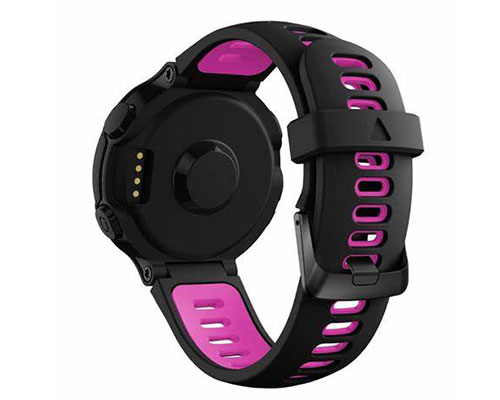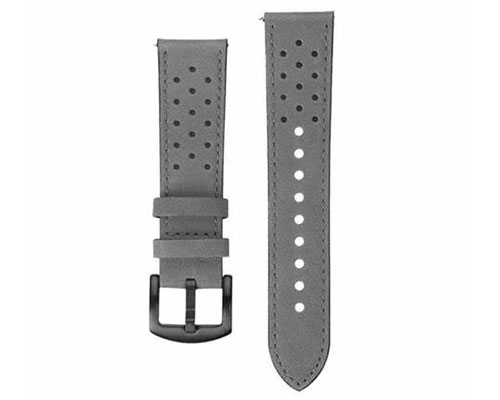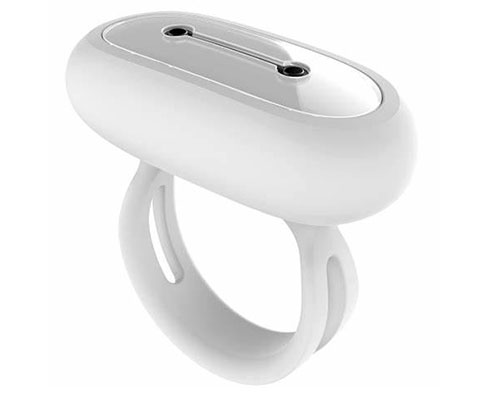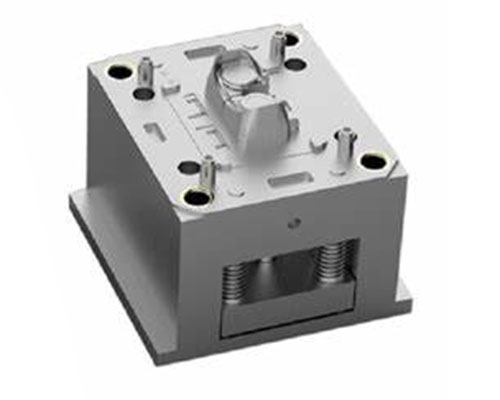Prototyping and Manufacturing Application in Smart Wearable parts Industries
From Prototype to Mass Production: Smart Wearables Made Simple:
Accelerate your smart wearable development with Yigu Technology’s end-to-end manufacturing solutions. We bridge the gap between innovation and market-ready products.
✅ Rapid Prototyping – Turn ideas into functional prototypes in days.
✅ Scalable Mass Production – High-volume manufacturing with consistent quality.
✅ Industry-Specific Expertise – IoT, healthcare, fitness, and more.
✅ Cost-Effective – Optimized processes to reduce time-to-market and expenses.
Partner with us to transform your wearable tech vision into reality—fast, reliable, and at scale.
1. Introduction to Rapid Prototyping and Mass Production in Smart Wearable Industries
1.1 Definition of Rapid Prototyping
Rapid prototyping is a group of techniques used to quickly fabricate a scale model of a physical part or assembly using three-dimensional computer-aided design (CAD) data. In the context of smart wearable industries, it allows designers and engineers to create physical prototypes of wearable devices such as smartwatches, fitness trackers, and health monitoring devices in a matter of hours or days rather than weeks. This process typically involves technologies like 3D printing, which can produce complex geometries and custom parts that are essential for the ergonomic and functional design of wearable devices.
1.2 Overview of Mass Production Techniques
Mass production in the smart wearable industry relies on various manufacturing techniques to ensure high volume and consistent quality. Injection molding is a common method used for creating plastic components of wearable devices. It is cost-effective for large-scale production and can produce parts with high precision and repeatability. For metal components, techniques such as die casting and stamping are employed. These methods allow for the production of lightweight yet durable parts that are crucial for the overall functionality and user experience of smart wearables. Additionally, the assembly process often involves automated production lines to ensure efficiency and quality control, with thousands of units being produced daily to meet market demand.
1.3 Importance in Smart Wearable Industries
The integration of rapid prototyping and mass production is vital for the smart wearable industry. Rapid prototyping enables quick iteration and testing of new designs, allowing companies to respond swiftly to market trends and consumer feedback. For example, a new smartwatch design can be prototyped and tested for user comfort and functionality within a short period. Once a design is finalized, mass production techniques ensure that the product can be manufactured at scale, meeting the high demand from consumers. This combination of rapid prototyping and mass production not only accelerates the time-to-market but also ensures that the final product is of high quality and meets the specific needs of the wearable market.
2. Applications of Rapid Prototyping in Smart Wearable Industries
2.1 Design and Development Phase
Rapid prototyping plays a crucial role in the initial design and development phase of smart wearable devices. According to a survey conducted by the Wearable Technology Association, over 80% of companies in the smart wearable industry reported that rapid prototyping significantly reduced their product development cycle. For example, a leading smartwatch manufacturer used 3D printing to create the first prototype of a new smartwatch model within just 48 hours. This allowed the design team to quickly visualize and evaluate the design concept, making necessary adjustments before moving on to the next stage. The ability to rapidly create physical prototypes from CAD models enables designers to experiment with different shapes, sizes, and functionalities, ensuring that the final product meets both aesthetic and ergonomic requirements.
2.2 Iterative Testing and Refinement
In the smart wearable industry, iterative testing and refinement are essential to ensure that products are both functional and user-friendly. Rapid prototyping facilitates this process by allowing multiple iterations of a prototype to be produced quickly and cost-effectively. Data from a recent industry report indicates that companies using rapid prototyping for iterative testing can reduce product defects by up to 30%. For instance, a fitness tracker company created several iterations of a prototype to test different sensor placements and user interface designs. Each iteration was tested with a group of users, and feedback was used to refine the design. This iterative approach not only improves the product's performance but also enhances user satisfaction. By quickly identifying and addressing design flaws, companies can bring higher-quality products to market faster.
2.3 Customization and Personalization
The demand for customization and personalization in the smart wearable market is growing rapidly. A market research study by Gartner predicts that by 2027, 60% of smart wearable devices will offer some form of customization or personalization options. Rapid prototyping technologies, such as 3D printing, are well-suited to meet this demand. For example, a health monitoring device company used 3D printing to create custom-fit cases for their devices based on individual users' body measurements. This level of customization not only improves user comfort but also enhances the device's functionality by ensuring a secure fit. Additionally, rapid prototyping allows for the production of small batches of customized parts, making it economically viable for companies to offer personalized options without the high costs associated with traditional manufacturing methods.
3. Mass Production Techniques for Smart Wearable Parts
3.1 Injection Molding for Plastic Components
Injection molding is a cornerstone of mass production for plastic components in the smart wearable industry. It involves injecting molten plastic into a mold cavity, where it cools and solidifies into the desired shape. This technique is highly efficient for producing large volumes of parts with tight tolerances and high consistency.
- High Volume Production: Injection molding can produce millions of parts with minimal variation, making it ideal for the high demand of smart wearable devices. For example, a single injection mold can produce over 100,000 watch cases in a production run, ensuring that each unit is identical in size and shape.
- Material Flexibility: The process supports a wide range of plastic materials, from rigid polycarbonate to flexible TPU, allowing manufacturers to choose the best material for specific applications. This flexibility is crucial for creating components that are both durable and lightweight.
- Cost Efficiency: While the initial cost of creating molds is high, the per-unit cost decreases significantly with increased production volume. This makes injection molding economically viable for large-scale manufacturing, reducing the overall cost of production.
- Precision and Quality: Modern injection molding machines can achieve high precision, with tolerances as tight as ±0.05 mm. This ensures that plastic components fit perfectly with other parts, such as electronic modules and metal components, enhancing the overall quality and reliability of the wearable device.
3.2 Precision Machining for Metal Parts
Precision machining is essential for producing metal components in smart wearables, which require high accuracy and durability. Techniques like CNC (Computer Numerical Control) machining are commonly used to create parts such as watch straps, casings, and connectors.
- High Precision: CNC machining can achieve extremely tight tolerances, often within ±0.01 mm, ensuring that metal parts fit precisely with other components. This level of precision is critical for maintaining the functionality and aesthetics of smart wearable devices.
- Material Strength: Metals like stainless steel, aluminum, and titanium are commonly used due to their strength and durability. These materials can withstand the rigors of daily use, providing long-lasting performance and reliability.
- Customization: Precision machining allows for the production of custom parts with complex geometries. This is particularly useful for creating unique designs and personalized components, such as custom-fit watch straps or engraved casings.
- Surface Finishing: Advanced machining techniques can produce high-quality surface finishes, ranging from matte to mirror-like polish. This enhances the visual appeal of the metal components, contributing to the overall premium feel of the wearable device.
3.3 Electronics Manufacturing Services
The integration of electronics is a critical aspect of smart wearable devices, and electronics manufacturing services (EMS) play a vital role in this process. EMS providers offer a range of services, from PCB (Printed Circuit Board) assembly to final product testing, ensuring that the electronic components are reliable and functional.
- PCB Assembly: EMS providers use advanced pick-and-place machines to assemble PCBs with high precision and speed. These machines can place thousands of components per hour, ensuring that the electronic boards are assembled accurately and efficiently.
- Quality Control: Rigorous testing protocols are employed to ensure the quality and reliability of electronic components. This includes functional testing, environmental testing, and durability testing to simulate real-world usage conditions. For example, a smartwatch's PCB may undergo temperature cycling tests to ensure it can withstand extreme temperatures.
- Supply Chain Integration: EMS providers often manage the entire supply chain, from sourcing components to final assembly. This integrated approach reduces lead times and ensures that all components are available when needed, facilitating smooth production processes.
- Scalability: EMS providers can scale production up or down based on demand, ensuring that manufacturers can meet market needs without overproducing. This flexibility is crucial for the smart wearable industry, where demand can fluctuate rapidly.
4. Case Studies of Smart Wearable Parts
4.1 Case Study 1: Smart Watch Housing Production
The production of smart watch housings is a prime example of the application of both rapid prototyping and mass production techniques in the smart wearable industry. A leading smart watch manufacturer utilized 3D printing for the initial prototyping phase, allowing for the creation of multiple design iterations within a short period. This enabled the design team to quickly evaluate different ergonomic shapes and material properties. The final design was then transferred to mass production using injection molding. The injection molding process produced over 500,000 watch housings in a single production run, with each housing having a tolerance of ±0.03 mm. The use of polycarbonate material ensured durability and light weight, while the high precision of injection molding guaranteed consistent quality across all units.
4.2 Case Study 2: Development of Flexible Sensors
Flexible sensors are a critical component in many smart wearable devices, and their development highlights the importance of rapid prototyping. A fitness tracker company used 3D printing to create prototypes of flexible sensors, allowing for quick adjustments in sensor placement and design. The prototypes were tested for accuracy and comfort, with multiple iterations being produced within a week. Once the optimal design was finalized, the company partnered with a specialized electronics manufacturer to produce the sensors at scale. The final flexible sensors were manufactured using precision printing techniques, ensuring high accuracy and reliability. These sensors were integrated into over 200,000 fitness trackers, significantly enhancing the devices' functionality and user experience.
4.3 Case Study 3: Integration of Miniaturized Electronics
The integration of miniaturized electronics into smart wearable devices is a complex process that requires both rapid prototyping and efficient mass production. A health monitoring device company used rapid prototyping to develop a new miniaturized electronic module that could fit into a small form factor. The initial prototypes were created using 3D printing and tested for functionality and performance. The final design was then handed over to an EMS provider for mass production. The EMS provider used advanced pick-and-place machines to assemble the PCBs, ensuring high precision and reliability. Over 300,000 miniaturized electronic modules were produced, each undergoing rigorous testing to ensure they met the required standards. The integration of these modules into the health monitoring devices significantly improved their performance and accuracy, making them a valuable tool for users.
5. Challenges and Solutions in Manufacturing Smart Wearables
5.1 Material Selection and Compatibility
Material selection is a critical challenge in the manufacturing of smart wearables due to the need for a combination of properties such as flexibility, durability, and biocompatibility. For example, the skin contact areas of wearable devices require materials that are hypoallergenic and comfortable for long-term wear. A study by the Materials Research Society found that over 70% of smart wearable manufacturers face challenges in finding materials that meet both functional and aesthetic requirements. To address this, companies are increasingly turning to advanced materials like biocompatible silicones and flexible thermoplastics. These materials not only provide the necessary flexibility and durability but also ensure user comfort. Additionally, manufacturers are investing in material testing and certification processes to ensure compatibility with human skin, thereby reducing the risk of allergic reactions and improving user satisfaction.
5.2 Miniaturization and Integration
Miniaturization is essential for smart wearables to maintain a compact form factor while integrating multiple functionalities. The challenge lies in reducing the size of electronic components without compromising their performance. According to a report by the International Electronics Manufacturing Initiative, the demand for miniaturized components in smart wearables is projected to grow by 15% annually over the next five years. To meet this demand, manufacturers are adopting advanced packaging techniques such as System-in-Package (SiP) and Chip-on-Board (CoB). These methods allow for the integration of multiple electronic components into a single module, significantly reducing the overall footprint. For instance, a leading wearable device manufacturer has successfully integrated a microcontroller, sensor array, and communication module into a single SiP, reducing the size by 40% compared to traditional assembly methods. This miniaturization not only enhances the device's functionality but also allows for more ergonomic designs that are comfortable for users to wear.
5.3 Quality Control and Reliability
Ensuring the quality and reliability of smart wearable devices is crucial for consumer trust and market success. The complex integration of mechanical, electronic, and software components presents significant challenges in maintaining consistent quality. Data from the Consumer Electronics Quality Report indicates that 30% of smart wearable returns are due to quality issues such as component failure and software glitches. To address these challenges, manufacturers are implementing stringent quality control measures throughout the production process. This includes the use of automated inspection systems that can detect defects at the component level, ensuring that only high-quality parts are assembled. Additionally, rigorous testing protocols are employed to simulate real-world usage conditions, such as temperature variations, physical stress, and environmental exposure. For example, a major smartwatch manufacturer conducts over 100 different tests on each unit, including drop tests, water resistance tests, and battery life tests, to ensure that the devices meet the highest standards of reliability. By investing in advanced quality control technologies and processes, manufacturers can significantly reduce the rate of defects and improve the overall reliability of smart wearable devices.



